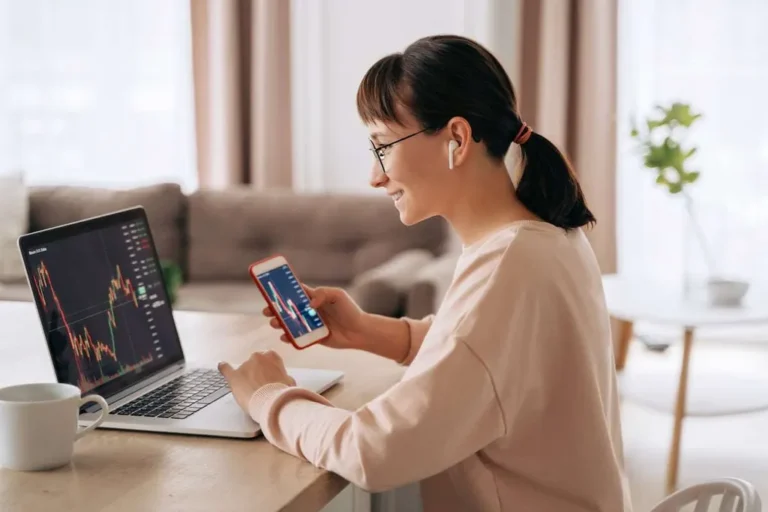Content
Low-probability order blocks may not always lead to substantial price movements, while high-probability order blocks are more likely to result in significant shifts. You can place a buy order slightly above this zone, expecting the price to rise due to the strong buying interest. To reduce yield farming risks, https://www.xcritical.com/ it you have to have solid knowledge on how to prevent any possible damages from yield farming.
Understanding the Relationship Between Liquidity and Market Movement
Selling into runs or going short targets the next stacked zone once momentum stalls. Weak, delayed breakdowns through the sell side areas create a gap that traditional traders what is buy side liquidity target to buy. The aggressive long entries chasing holds above these lower-value pockets. With experience, both paths can establish a strong professional foundation. It forms support as it finds a price level at which it doesn’t want to push below and acts as the staging ground for further thrust upward.
Buy Side and Sell Side Liquidity – How Does It Work?
This whisper number becomes the newest, although unwritten, consensus expectation. We offer a set of proven indicators and advanced Algos/Systems that help traders to get the edge they deserve. Your startup pitch is your opportunity to sell your business to investors, customers, and… For example, if the price of a currency pair suddenly moves away from a support level, it indicates displacement.
ICT Trading: Fair Value Gap (Bullish & Bearish) and Inversion

Asset Manager A is a buy-side firm that manages a portfolio of securities on behalf of its clients. On the sell-side, Broker B provides market services, such as access to the stock exchange. However, smaller firms typically specialize in one area because fewer resources are involved. One main difference between buy-side and sell-side analysts is their focus.

Expert Guide: The M&A process for buyers and sellers
Diminishing conviction in a direction is what will be shown if the bands of volume are receding, while for the opposite, expanding bands are shown. The buy side caters mainly to significant institutional investors, including pension funds, endowments, hedge funds and high-net-worth individuals. These clients are looking for an edge in terms of best risk-adjusted returns.
The intricate landscape of the Forex market is perpetually swayed by the ebb and flow of buy side liquidity forex, a critical concept that every shrewd trader must navigate. This liquidity is the linchpin of efficient markets, hinging on the presence of robust resting orders that act as a buffer for smooth price transitions. The ability to execute trades without unwanted disruption depends significantly on the way these orders are organized and interact within the various price levels. Buy-side companies make money by buying low and selling high trade activities.
One of the major risks of liquidity provision is adverse selection, which occurs when market makers are forced to trade with informed investors who have better information about an asset’s true value. This can lead to losses for market makers, as they may end up buying assets at a higher price or selling them at a lower price than they should. Additionally, liquidity provision can expose market makers to market risk, as they may be forced to hold positions in assets that are declining in value. One of the main ways that HFT affects market liquidity is by increasing trading volume and reducing bid-ask spreads.
Buy side trading activities, steered by prominent buy side liquidity providers, play a pivotal role in formulating the market’s direction and volatility. Institutional trading entities exploit the accumulations of these orders strategically to direct the marketplace, making an advanced grasp of market mechanics an indispensable asset for the modern trader. Comprehending how these market makers operate opens the door to potentially predict, with greater accuracy, the dynamic rhythms of the Forex market. Liquidity is the first, and arguably the most important concept within the ICT trading methodology.
However, if the price breaks through the resistance, all the stops that have been placed above it will be triggered. Liquidity is an important concept in trading, and it becomes even more crucial when applying the principles of ICT to your trading strategies. In simple terms, liquidity refers to the ease with which a particular asset can be bought or sold without affecting its market price. In trending states, liquidity gradually flows deeper in the prevailing direction as zones stack closely along, following the momentum. Consolidating markets see this liquidity flip-flop between defined levels.
On the Sell Side of the capital markets, we have professionals who represent corporations that need to raise money by SELLING securities (hence the name “Sell Side”). The Sell-Side mostly consists of banks, advisory firms, or other firms that facilitate the selling of securities on behalf of their clients. Because retail traders tend to place Sell stops at predictable levels, these areas become liquidity pools. For large institutions, which need substantial liquidity to fill their large buy orders, these pools of stop orders are highly attractive. When the market reaches a major resistance level, many traders open short positions in anticipation of a price reversal. In doing so, they also place their stops higher than the resistance level to limit potential losses.
Each of these options has its own benefits and risks, and the best option will depend on the specific circumstances of the market and the preferences of market participants. High-frequency trading has a significant impact on market liquidity, both positive and negative. While HFT firms can provide liquidity to the market and reduce bid-ask spreads, they can also cause sudden shifts in market behavior and engage in predatory trading practices. To ensure that HFT contributes to market liquidity in a positive way, it is crucial to strike a balance between its benefits and drawbacks through regulation and collaboration between market participants.
- Traders frequently make incorrect predictions in areas where they find these points.
- Identifying these imbalances can provide insights into potential market movements and help refine trading decisions.
- Monitoring sell side and buy side liquidity levels is crucial for predicting market shifts.
- Above the swing high or above top of ICT dealing range, the resting liquidity is referred to as buy side liquidity.
- This helps ELPs offer better prices to the buy side than is otherwise found on the exchanges.
Institution may manipulate the price on specific points to gather more assets before continuing the price in their favor. Others maintain the optimal way for buy-side firms to access the bilateral liquidity model is via specialist brokers which retain independence. These firms act as a bridge for clients to access liquidity from the ELPs – and therefore obtain high quality liquidity and improved pricing. This could include competing bids and offers from the likes of XTX and potentially others from the ELP peer group.
However, this figure does not account for bonuses or non-salary benefits, which can be considerable. Salary also varies by city, firm, and how many years of experience an analyst may have. Occasionally, sell-side analysts fail to revise their estimates, but their expectations do change. Financial news articles will refer to a whisper number, which is an estimate that is different from the consensus estimate.
Market depth can vary by security, with some securities having deeper markets than others. Highly liquid securities, such as large-cap stocks, tend to have deep markets with high levels of liquidity provision. In contrast, less liquid securities, such as small-cap stocks or emerging market bonds, tend to have shallow markets with lower levels of liquidity provision. This can make it more difficult to trade these securities and increase the risk of large price movements. They do this by providing liquidity, which makes it easier and faster for buyers and sellers to transact.

